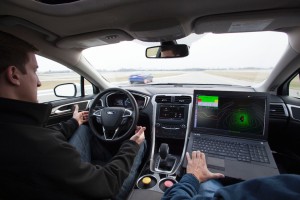
Automakers, suppliers, tech companies and others asked members of a Senate committee to establish federal rules governing autonomous vehicles.
Auto companies, technology giants and academics gathered before of Senate committee to talk about the coming wave of autonomous vehicles and what it means, what’s expected and what should be next and they all focused on one point: rules.
The Senate Commerce committee was repeatedly told that while self-driving vehicles aren’t quite ready for primetime, one of the reasons why is that there is no standard set of rules that they’ll be governed by once they are ready to be turned loose.
With no nationwide set of regulations, it’s difficult to develop the vehicles because the conditions are different from state to state.
Chris Urmson, technical leader of Google’s self-driving car project, told the committee that legislators in 23 states have introduced 53 bills regulating autonomous cars in recent years, covering everything from legal liability to testing rules.
(Is Gen-Z ready to fall in love with cars again. For the answer, Click Here.)
“If every state is left to go its own way without a unified approach, operating self-driving cars across state boundaries would be an unworkable situation and one that will significantly hinder safety innovation, interstate commerce, national competitiveness and the eventual deployment of autonomous vehicles,” Urmson said.
Thus far, federal agencies have been supportive of the move toward autonomous vehicles, seeing them as a way to reduce traffic fatalities, which are on the rise after decades of drops.
Mark Rosekind, National Highway Traffic Safety Administration administrator, has repeatedly stated he believes autonomous technology is the simplest and quickest way to improve road safety.
To that end, the Obama Administration has earmarked nearly $4 billion to assist in the acceleration of product and technology development for self-driving vehicles.
(Terrorists could use autonomous vehicles as car bombs. For more, Click Here.)
While most of the participants, which included General Motors and Delphi, which both have self-driving vehicles in development – Delphi’s vehicle completed a trek from California to New York last year – the technology does have some who want to hit the brakes on autonomous technology.
They point out that issues such as road infrastructure and weather can make a self-driving car utterly useless. The vehicle needs clean and clear visibility in order to use the lane markings to drive down the road as well as to be able to track other vehicles and pedestrians around it.
“I am decidedly less optimistic,” said Mary Louise Cummings, director of Duke University’s Humans and Autonomy Lab and Duke Robotics, told the committee, according to a USA Today story. Self-driving cars are “absolutely not ready for widespread deployment, and certainly not ready for humans to be completely taken out of the driver’s seat.”
Despite her glass-half-empty attitude about the readiness of the technology, she does appear to be supportive of ongoing efforts to perfect the system because they’ll ultimately be better than what, or who, is behind the wheel now.
(To find out more about GM and Lyft’s new cheap rental program, Click Here.)
She says she is among those who “enthusiastically support the research, development, and testing of self – driving cars” because “human limitations and the propensity for distraction are real threats on the road.”
